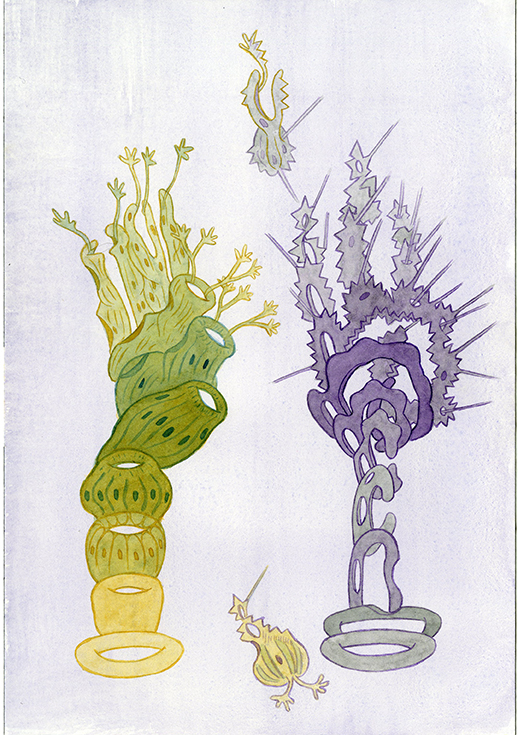A short note on the ‘Isomorphogenesis’ series (2014):
‘Isomorphogenesis’, is a drawing based algorithm that experiments with analogue simulations of theoretical morphology and also explores the potentialities of representing morphology as a dynamic and formative process. Isomorphogenesis builds on the Isomorphology method as it progresses from the empirical study of the morphology of static museum specimens towards a conceptual study which aims to draw morphology as dynamic.
Isomorphogenesis brings together my experience of working with practitioners in theoretical and empirical branches of science (mainly at the Natural History Museum and Imperial College) in that it unites the observational and the abstract – experiment and theory – through drawing. As such Isomorphogenesis samples aspects from the work of others and employs theory in the service of practice.
Historical and contemporary concepts from the fields of natural science, mathematics, philosophy and art which investigate and interpret morphological development, have informed Isomorphogenesis. For example, D’Arcy Thompson’s On Growth and Form (1917), which famously combined biological and mathematical concepts through a work of scientific prose and influenced artistic representations of dynamic form.













